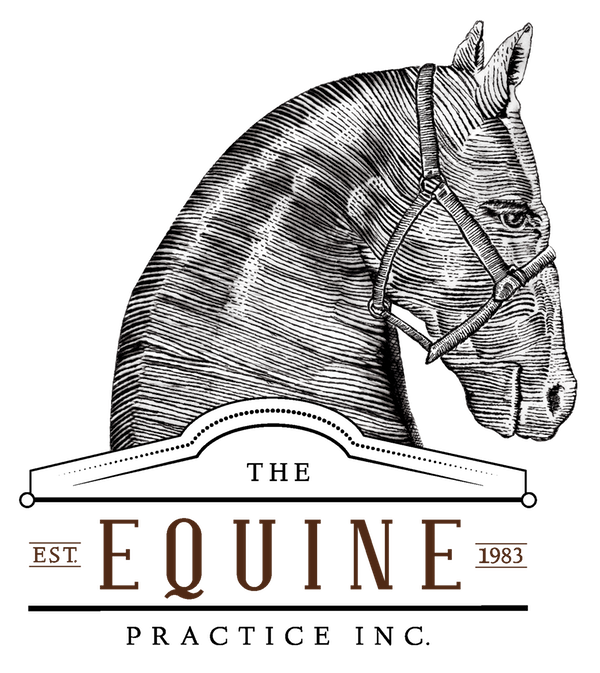The European College of Equine Internal Medicine (ECEIM) issued a consensus statement on a problem affecting a lot of horses called in general, Equine Metabolic Syndrome or EMS. I want to summarize here some of the key points and then add my 2 cents.
Obesity
The following points were made about EMS some of which I found shocking. Obesity was defined as increased body fat that has a negative effect on the health of the horse. Most horses with EMS, but not all, are obese.
• EMS is more common in sedentary horses.
• EMS is most common in Shetland ponies, donkeys and miniature horses.
• Insulin levels were higher in older horses and ponies.
• Obesity ranges from 21% to 45% in the United Kingdom.
• Obesity is in 10% of Icelandic horses in Denmark.
• Obesity is in 8% to 29% of horses in Canada.
• Obesity is in 24.5% of Australian pleasure horses and ponies.
• Obesity is in 51% of mature light breed horses in the US.
• Thoroughbreds were the least likely to be obese compared to draft-type, cob-type, Welsh, Shetland, Rocky Mountain, Tennessee Walker, Quarter Horses, Warmblood and mixed breed horses.
Isn’t it interesting that over half the mature light breed horses in America are considered obese? This is more than any other country. I have also noted that the number of horses I see today that are ill or lame is greater than compared to 30 to 40 years ago. A coincidence?
Oh Gosh Everybody – Here I Go Again!
During the last year I have taken away the illusion of complexity that surrounds feeding horses. It has been more difficult than I thought. One reason for this is the excellent marketing of misinformation. The second reason is that most of the horse owners I see say, “I will do anything for my horses.” Unfortunately doing “anything” has become “everything” with the vultures praying on these individuals with feed and supplements that at best do nothing for their horses. At worst it makes them fat. And fat means inflammation and inefficiencies in the body systems.
Last week I introduced the liver and its important role in filtering the blood. Blood from 70% of the gut, with all the sugars, fats and proteins, goes through the liver before it goes into any other part of the body. I introduced the phrase of “liver overflow.” In essence, there is too much fuel entering the liver and its capacity to use it is overwhelmed. It is like a sink with a limiting drain being filled with a fire hose. Eventually the water overflows the sink. In the liver, all parts become saturated which leads to inefficiency in fueling the body as well as distributing protein needed to make the horse operate. This leads to illness and dysfunction of systems.
The fire hose in the horse is owners feeding every day too much food. Forage, grains and supplements are abundant, hand delivered to our barn and stacked neatly with just a simple phone call. It is ruining our horses. In the wild all horses and in fact all animals have a season when food is not as abundant. They are supposed to use the body fat for energy. They eat “poor” pasture which is actually a high fat diet. Remember that fat has 20 to 28 times more energy than sugar so they don’t need to eat as much. When the summer grass returns the horses gain body fat because….. winter is coming.
Missing From The Report
I was very disappointed in the ECEIM consensus report because only a few sentences were devoted to protein. They said, “Ensuring adequate protein, vitamins and minerals is important via a ration balancer supplement.” Yikes! I wrote about a national ration balancer in my blog “Betrayal!” Worse, the report never mentioned how much protein a horse should be getting (read “Chronic Protein Deficiency In Horses“). Studies in horses and humans both show the importance of adding protein to reduce fatty liver and fat in the blood (hyperlipemia). Guess what is found in all horses with EMS? They have hyperlipemia.
In essence the report suggests to starve the horse by removing all grain (yea!), muzzling, restricting hay and pasture, soaking the hay in water (with caution) and increasing exercise. If I were a horse then just shoot me rather than starve me! There is nothing worse than starving a horse. Yet in my experience, horses with an adequate protein intake decrease their appetite and they naturally lose weight. They also add top line, flatten their hay belly, improve their hair coat, skin and hooves and have a generally more improved outlook on life.
I cannot understand why chronic protein deficiency is not being addressed at professional meetings. It is the missing link and was missing in this lengthy report on EMS.
What was clear in the report was that there are a lot of fat horses out there. And half of the horses in the USA are considered obese. Can you say epidemic?
The Horsemanship Nutrition Course
Want to learn more about feeding horses? Click here to dig in deeper.
Horse Nutrition Course
